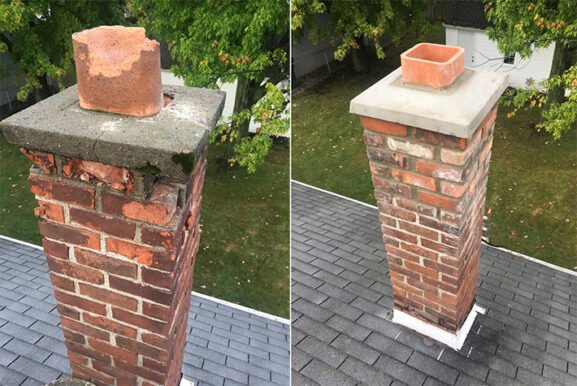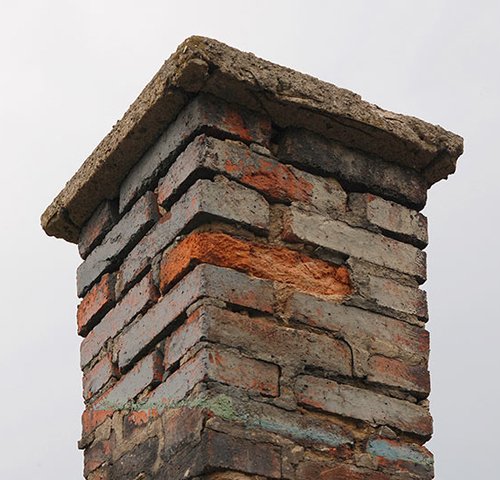Why Flashing Chimney Repair Is Critical for Long-Term Home Safety
Key Takeaways
- Damaged chimney flashing is a leading cause of water leaks in the home
- Early repair prevents costly structural issues and mold growth
- Flashing deterioration can occur from weather, age, or poor installation
- Professional inspections help detect problems before they escalate
Understanding the Role of Chimney Flashing
Chimney flashing is a protective seal that covers the intersection between your chimney and the roof. It serves one essential purpose — to keep water from seeping into your home. Typically made from metal such as aluminum, copper, or galvanized steel, flashing is installed in layers around the base of the chimney to guide water away from vulnerable joints.
When flashing fails, water can enter the attic, walls, or ceilings. Over time, this leads to wood rot, drywall damage, and mold growth — issues that are far more expensive to fix than flashing itself. In many cases, flashing failure goes unnoticed until signs of water damage appear inside the home.
Signs That Your Chimney Flashing Needs Repair
Homeowners often overlook chimney flashing during regular roof checks. However, catching early signs of damage can prevent major headaches. Be on the lookout for:
- Water stains on ceilings or walls near the chimney
- Rusty or corroded flashing metal
- Loose or missing sections of flashing
- Debris buildup where the chimney meets the roof
- Visible gaps or lifting around the flashing edges
Flashing issues can mimic the symptoms of roof leaks, which makes them harder to diagnose. That’s why a chimney professional or roofer familiar with flashing systems should assess the situation.
Common Causes of Flashing Failure
Even properly installed flashing doesn’t last forever. Exposure to wind, rain, snow, and temperature swings takes its toll. Here are some common reasons flashing may fail:
Weather Extremes
Storms and high winds can lift or bend flashing, while freeze-thaw cycles in colder regions can cause cracks. Over time, this weakens the waterproof barrier.
Aging Materials
Metals corrode with age. As the flashing oxidizes, it loses its strength and begins to detach. Tar or caulk used to seal the flashing can also dry out and crack over time.
Improper Installation
Poor workmanship is a frequent issue. If the flashing was not layered correctly, or if incompatible materials were used, water may bypass the system altogether.
Shifting Rooflines or Chimney Movement
Houses settle and shift over time, and so do their chimneys. When the structure moves, flashing can pull away or crack, exposing gaps that allow water in.
Why Flashing Repair Should Never Be Delayed
Water is persistent. Even a tiny gap in your chimney flashing can allow moisture to seep in over time. Once inside, water doesn’t stay put. It can travel along beams, insulation, and joists — damaging materials far beyond the initial leak site.
Delaying repairs can lead to:
- Structural wood rot
- Mold growth, which can cause respiratory issues
- Insulation damage, reducing energy efficiency
- Ceiling or drywall collapse in severe cases
The financial implications of ignoring flashing problems are significant. According to This Old House, properly installed and maintained flashing can last decades. However, when damage is neglected, repair costs can escalate dramatically.
Repair Options Depending on Flashing Condition
The right repair depends on the extent of the damage. Professionals will inspect the flashing and recommend one of the following:
Resealing with Roofing Cement or Caulk
This is suitable for minor cracks or lifted sections. It’s a temporary fix, but helpful in preventing further damage while planning a more permanent solution.
Partial Flashing Replacement
When only part of the flashing is damaged, professionals can replace the affected section. This requires skill to ensure a watertight seal with the remaining pieces.
Full Flashing Replacement
In cases of severe corrosion, improper installation, or multiple problem areas, a complete replacement is the best option. It involves removing shingles around the chimney, replacing the step and counter-flashing, and reinstalling the roofing material.
It’s crucial that repairs be done by someone who understands both roofing and chimney systems to avoid introducing new vulnerabilities.
The Importance of a Yearly Chimney Inspection
Routine chimney inspections are essential for catching flashing issues before they cause interior damage. Experts recommend inspecting your chimney at least once per year — preferably before the rainy or snowy season begins.
Inspections often include:
- Checking the flashing seal for corrosion or lifting
- Verifying the chimney crown and cap are intact
- Looking for masonry cracks near the base of the chimney
- Ensuring water isn’t pooling at the flashing edge
A small repair spotted early can save hundreds — or even thousands — in future roof and interior restoration costs.
Tips to Prevent Future Flashing Problems
Prevention starts with awareness and maintenance. Here’s how homeowners can reduce the risk of flashing damage:
- Trim tree limbs hanging over the roof to prevent debris buildup and wind damage
- Keep gutters clean to direct water flow away from the chimney
- Use a chimney cricket on steep roofs to divert water around the base
- Ensure any roofing work includes a flashing inspection
- Hire licensed professionals for both roof and chimney jobs
Staying proactive helps protect your chimney and roofing system from early failure.
Long-Term Value of Timely Chimney Flashing Repairs
Flashing chimney repair might not sound urgent — especially when the signs are subtle or hidden. However, small water entry points can turn into major structural problems over time. Addressing flashing issues promptly preserves your home’s integrity and helps avoid expensive repairs down the line.
Whether your home is decades old or recently built, making sure your chimney flashing is secure is one of the smartest maintenance steps you can take. It’s not just about keeping water out. It’s about keeping your home safe, dry, and structurally sound for years to come.

